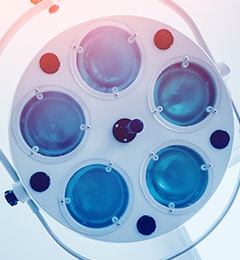Learn more about micro-thermocouple temperature sensors from TE Connectivity.

Thermocouple Sensors
A thermocouple sensor consists of two dissimilar metals, joined together at one end in a thermocouple junction. When the thermocouple junction is at a different temperature than the other end of the wires a millivolt signal is generated this junction is where the temperature is measured. A small voltage is produced by the two metals, which can be measured and interpreted by a control system. The dissimilar metals are individually insulated, and an overcoat is present to maintain an intimate bifilar configuration.
Thermocouple Features
- Wide operating temperature range
- Relatively constant sensitivity over their entire range
- Industry standard output signals
- Most popular alloy types available
- Wide range of sizes available, from micro to heavy industrial
- Metal sheathing and industrial connection head options
- Full range of motor/generator and plastic industry styles
Applications
Thermocouples have a wide range of applications, including:
- Industrial process control
- Commercial ovens and heaters
- Home appliances
- Jet engine exhaust gas temperature monitoring
- Special medical applications
Featured Product
Micro-Thermocouple (MTC) Sensor
Medical applications, like catheters, require small temperature sensors with specific characteristics. Our micro-thermocouple sensors provide:
- Extremely small size for rapid response to temperature changes
- High accuracy and reliability
- Durability to withstand the challenges of the medical operating environment
- Available in type K and type T thermocouple configurations
- Micro-thermocouple sensors come in different sizes, going down to AWG#44, and are offered in welded and soldered versions
- An alternative to thermistor assemblies in very small catheter setups

Stator temperature sensors provide high stability for various applications, including large motors.

Frequently Asked Questions
Q: What are the advantages and disadvantages of grounded thermocouples?
A: A grounded junction puts the junction in contact with the packaging, protecting, and metal case. This allows for a faster response time, however, a grounded tip is susceptible to electromotive forces in the environment, which might cause potential errors in the measurement. An ungrounded junction, therefore, is one without contact with the metal case. Thus, have a slower response time, but are less likely to provide erroneous readings.
Read More: RTDs & Thermocouples FAQs



